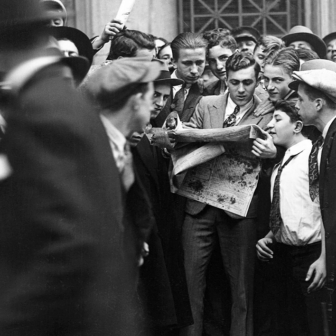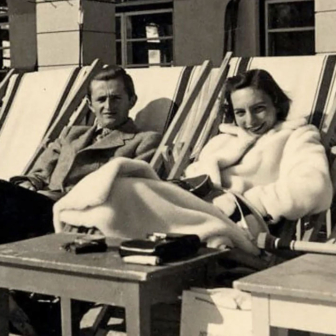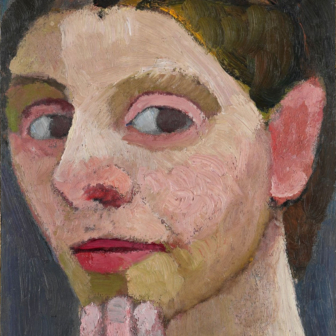Before Rupert: Keith Murdoch and the Birth of a Dynasty
By Tom D.C. Roberts | University of Queensland Press | $34.95
It is a curious experience to read the entrails of a man who gave you your first job as a journalist, exactly seventy years ago. I recall walking nervously into the third-floor oak-lined office overlooking Flinders Street in Melbourne, and facing up to a heavily built figure sitting motionless behind a large desk. Shrewd dark eyes peered at me from under bushy brows.
“I remember your grandfather,” Sir Keith Murdoch said abruptly. “Tell me,” he went on with his characteristic stutter, “are you a c-c-communist?”
Some angel came to my rescue. “No,” I replied brightly. “I used to be, but not any more.”
“Good, you can start on Monday,” said KM. “Go and see the chief of staff.” And that was that.
I sometimes encountered KM again, clutching a copy of the first edition of the Herald on his frequent visits to the newsroom, pausing now and then to congratulate one of his young men on a particularly interesting story. He certainly knew how to get the best out of his reporters, using their raw material to help build Australia’s biggest newspaper empire.
Now comes a new book, a devastating critique of what was happening behind the scenes. The author, who bills himself as the holder of two degrees from English universities and a PhD in modern history from Macquarie University, has spent the last few years tracking down many neglected sources of information about KM and the dynasty that today controls much of the world’s English-language mass media.
The Australian part of the story begins with the Rev. Patrick Murdoch, a Free Church of Scotland minister who emigrated to Melbourne in 1884 and rose to become moderator-general of the Presbyterian Church. I suspect that it was the stifling Calvinistic atmosphere of KM’s early childhood, with its repressive standards of behaviour, that led the sensitive boy to develop a severe stammer. At times he couldn’t even ask for a train ticket, having to scribble his destination on a piece of paper and hand it to the stationmaster. The disability forced him to abandon his early ambition to become a preacher and take up journalism instead, where, as he wrote to his father, “great work can be accomplished.”
Whatever the cause, KM struggled endlessly to overcome his drawbacks, and largely succeeded. Roberts deals sympathetically enough with this phase of KM’s life, and with his early belief in “the need for collectivism” (socialism, that is). In England to study at the London School of Economics, for instance, KM thought that the Establishment was “all beastly humbug.”
Back in Melbourne in 1910, KM so won the confidence of the Syme family, then controllers of the Age, that he was appointed to the vital role of federal reporter. But he soon became disillusioned with the paper’s nineteenth-century ways. He accepted a generous offer from the more lively Sydney Sun to become its Melbourne political correspondent.
As Roberts shows, this was the start of KM’s true vocation as a master of popular journalism and the moulding of public opinion. He was able to reject a secret offer from the Australian Workers’ Union to head its proposed national daily labour newspaper, a scheme that was abandoned anyhow on the outbreak of war in 1914.
There followed KM’s extraordinary part in the Gallipoli campaign, which has remained controversial ever since. The Murdoch family and its powerful media outlets have always portrayed him as one of the true heroes of the campaign. Tom Roberts shows that the truth is more complex.
Put briefly, KM was on his way to London in 1915 as a representative of the United Cable Service when he asked for permission to visit the Anzac forces fighting on the Gallipoli front. The commander, Sir Ian Hamilton, reluctantly agreed on condition that KM would submit anything he wrote to military censorship. In London, KM simply broke his promise, describing to the British and Australian governments the campaign’s “most ghastly and costly fiasco.” The result was the evacuation of Gallipoli and the saving (for the moment) of thousands of lives.
What would any journalist do, after seeing the appalling conditions and senseless slaughter on the peninsula? Act like a gentleman, and keep his word? Or expose the whole sorry business?
Whatever one’s opinion, KM’s Gallipoli reports elevated the young man to the top of London press and political circles. From this point on, as Roberts shows, he combined the roles of journalist and political manipulator for the rest of his life. In 1918 he even tried to have John Monash removed as AIF commander in France; and later, as Herald chief, he attacked Monash’s design for the Melbourne Shrine of Remembrance.
Meanwhile, he had spent most of the war dreaming up propaganda tricks for his mentor Lord Northcliffe, owner of the Times and the Daily Mail. From his office in the Times building, KM sent disgraceful cables to the Sydney Sun, once even alleging that the Germans were dragging bodies out of the trenches and boiling them down to make margarine. Well, at least he presaged the horrors of Hitler’s concentration camps.
KM also worked closely with Australian prime minister Billy Hughes, writing propaganda aimed at persuading his compatriots to agree to the two conscription referendums. KM was stunned when even his beloved Anzacs refused to vote in favour of forcing young men to join the deadly shambles of the Western Front.
Returning briefly to Australia as part of the Prince of Wales Empire tour of 1920, KM anointed the future King Edward VIII as the “Digger Prince” who possessed “an honesty that suggests good firm character.” This kind of nonsense seemed justified by the adoring crowd of 750,000 that greeted the prince at Port Melbourne.
KM’s growing fame at home and abroad led to W. L. Baillieu and Theodore Fink appointing him as editor-in-chief of the Herald & Weekly Times early in 1921. There, he quickly proved that he was the ultimate circulation builder, sometimes regardless of the ethics involved.
Roberts has extracted from the records the full story of the Herald’s treatment of the notorious “Gun Alley Murder” late in 1921. A twelve-year-old girl had been found strangled to death in a dark city lane. The Herald demanded that the government offer a substantial reward for discovery of the murderer, then gave advice to readers on how to claim the reward. Day after day the paper pestered the police to act. Finally they did, arresting one Colin Ross, licensee of a nearby wine bar. Even before his trial, the Herald published photographs of the alleged killer. Despite a fairly solid alibi and continual pleas of innocence, Ross was found guilty and executed. Eighty-six years later, after a forensic examination of the evidence, Ross was officially pardoned. An innocent man had been hanged.
The sales effect of the Herald’s campaign was remarkable. Its circulation (according to a letter now revealed from KM to Northcliffe) increased from 125,000 a day to 230,000.
Despite continued emphasis on crime, many of KM’s other innovations can scarcely be criticised. In mid 1922 he began publishing the biweekly Sporting Globe, which remained the bible of a sports-loving public until TV took over. The introduction of “sex appeal” (as recommended by Northcliffe) was modestly achieved with photographs of “The Ideal Holiday Girl” in a one-piece bathing costume. A contest followed for photographs of the “Best Baby in the British Empire.” She proved to be a little Melbourne girl with “milk-white skin, rosy apple cheeks, blue eyes and rich golden curly hair.”
KM also helped to pioneer commercial broadcasting in 1924–25 with station 3DB, and created a weekly newsreel for cinema audiences in 1931. Decades of opposition to the formation of the Australian Broadcasting Commission followed. To supply his papers with cheap newsprint, KM was the prime mover in 1938 in establishing the Australian paper-making industry. Above all, his wide range of imagination was shown by the sensational “Herald Exhibition of French and British Contemporary Art” in 1939, followed by the financing of the first chair of fine art at Melbourne University in 1945.
But the ever-active KM couldn’t refrain from direct interference in politics. His support during the Depression for the harsh economic policies advocated by British banker Otto Niemeyer and prime minister Joseph Lyons earned him the undying hatred of most Labor politicians. “You bloody old scoundrel,” yelled Arthur Calwell when they once crossed paths in Parliament House. KM stalked on silently.
After the outbreak of war in 1939 (which he had forecast three years earlier), Lyons’s successor, Robert Menzies, appointed him as director-general of information. In this powerful post, KM made new enemies when, using wartime powers, he issued an instruction to all media to print or broadcast government corrections to any item they had published. Editors were universally outraged at the “totalitarian tyranny” of this Goebbels-type dictatorship. Soon afterwards, KM resigned and returned, puzzled and somewhat chastened, to lead the Herald & Weekly Times into the use of Gallup Polls to ascertain the state of public opinion on various matters.
In 1941 Menzies lost his parliamentary majority and Labor’s John Curtin became prime minister – “a big trend towards proletarian dictatorship,” KM wrote in a private letter discovered by Roberts. When he began attacking the new government’s war policy in print, Curtin told a secret briefing of correspondents that he was “full of hot air and witlessness,” and “utterly unscrupulous in the way he conducts his newspapers.” Then Curtin stunned KM with his landslide victory in the 1943 election. Obviously the press was not as all-powerful as he’d believed.
After the war, KM was anxious to add the new world of television to his media companies. Labor had wanted to preserve TV as a government monopoly, Calwell telling me at the time of his plan to set up an “independent” TV monopoly which would broadcast only educational and cultural material, and act as a counter to the commercial interests he so hated.
This scheme was ended by the overwhelming victory of the Menzies-led Liberal Party in 1949. KM’s death three years later didn’t stop Menzies from awarding the best TV frequencies to the Herald, Packer and other supporters, giving them the renowned “licence to print money.”
By the early 1950s, KM’s energies were nearly spent and his judgement more clouded. A lifetime of great achievement but severe stress was coming to an end as he succumbed first to bowel cancer, then to prostate cancer, and then to the heart attack that killed him in 1952, at the comparatively young age of sixty-seven. Rarely was there a man in whom good and bad were so inextricably mixed.
Throughout his book, Roberts points out certain similarities between KM and his descendants, even unto the third generation, as though genes were indeed destiny. Although amusing, in my opinion this technique detracts slightly from the book’s impact, for the conditions faced by the current generations of Murdochs are vastly different from the first half of the twentieth century, and need different solutions. Sins of the one, such as they are, should not be visited on the other.
Roberts was fortunate in gaining access to the Herald and many personal archives, but somehow I doubt if his book will be praised in News Ltd papers. I recommend everyone to read it carefully, for it is a striking contribution to our knowledge of the times endured by our immediate predecessors.
KM’s greatest good fortune was to woo and wed the much younger Elisabeth Greene, who defended him and their only son Rupert against all attacks. Outliving KM by sixty years, Elisabeth was once asked why she never remarried. “There could never be another Keith,” she replied simply. That seems a fitting epitaph. •
Disclosure: Michael Cannon worked briefly for both Keith and Rupert Murdoch. Dame Elisabeth Murdoch contributed a memoir to Cannon’s book The Human Face of the Great Depression. He is a grandson of Monty Grover, founding editor of the Sydney Sun and the Melbourne Sun News-Pictorial (now the Herald Sun). Cannon’s brother-in-law, the late John Monks, wrote Two Lives, the only published biography of Dame Elisabeth.




